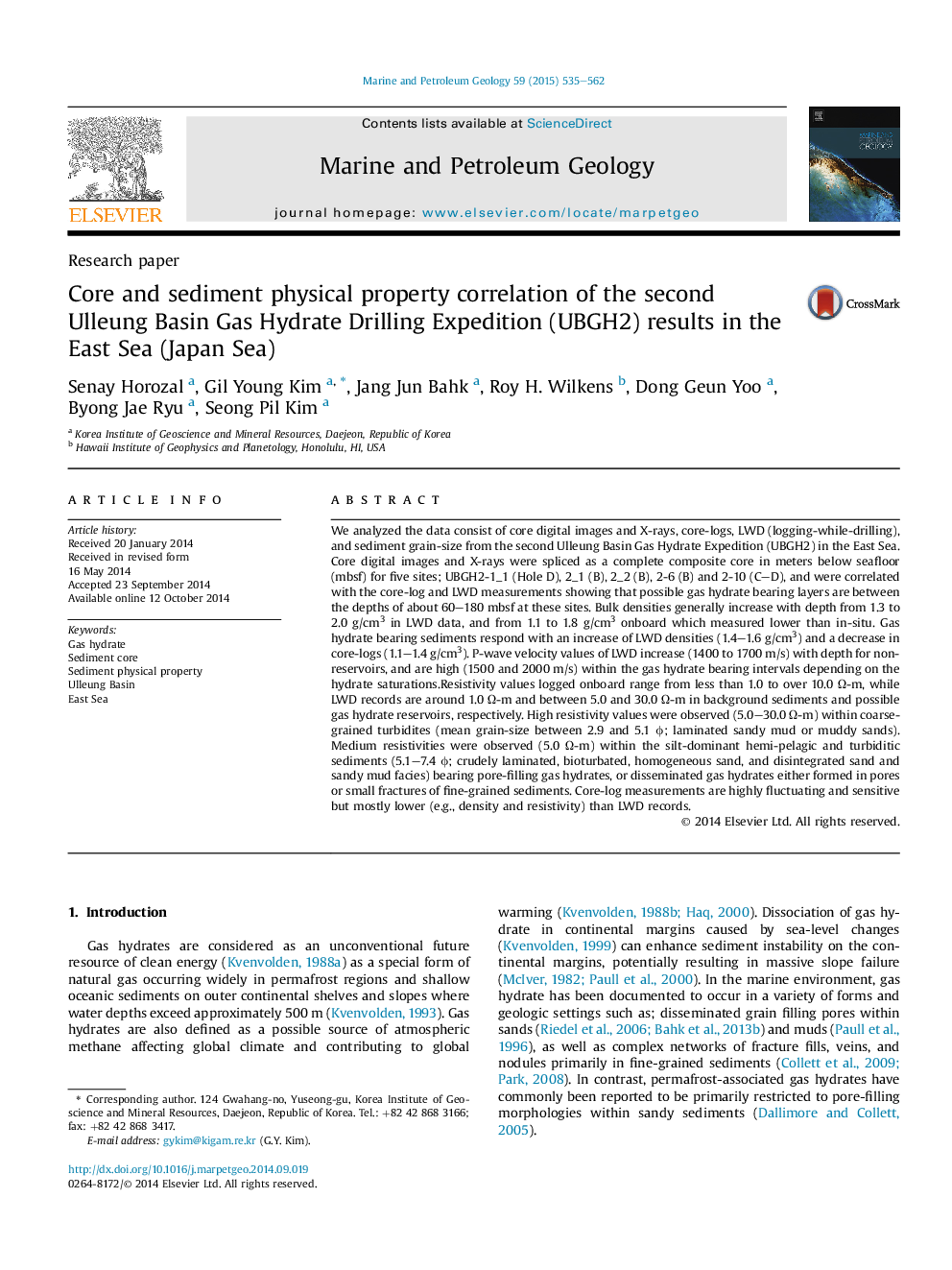| کد مقاله | کد نشریه | سال انتشار | مقاله انگلیسی | نسخه تمام متن |
|---|---|---|---|---|
| 4695640 | 1637166 | 2015 | 28 صفحه PDF | دانلود رایگان |

• UBGH2 (the Ulleung Basin Gas Hydrate Expedition 2) was performed.
• Digital images and X-rays of gas hydrate bearing-sediments were examined.
• Core image data and LWD log data were compared and studied.
• We suggest the relationships between gas hydrate occurrences and lithological conditions and physical properties.
We analyzed the data consist of core digital images and X-rays, core-logs, LWD (logging-while-drilling), and sediment grain-size from the second Ulleung Basin Gas Hydrate Expedition (UBGH2) in the East Sea. Core digital images and X-rays were spliced as a complete composite core in meters below seafloor (mbsf) for five sites; UBGH2-1_1 (Hole D), 2_1 (B), 2_2 (B), 2-6 (B) and 2-10 (C–D), and were correlated with the core-log and LWD measurements showing that possible gas hydrate bearing layers are between the depths of about 60–180 mbsf at these sites. Bulk densities generally increase with depth from 1.3 to 2.0 g/cm3 in LWD data, and from 1.1 to 1.8 g/cm3 onboard which measured lower than in-situ. Gas hydrate bearing sediments respond with an increase of LWD densities (1.4–1.6 g/cm3) and a decrease in core-logs (1.1–1.4 g/cm3). P-wave velocity values of LWD increase (1400 to 1700 m/s) with depth for non-reservoirs, and are high (1500 and 2000 m/s) within the gas hydrate bearing intervals depending on the hydrate saturations.Resistivity values logged onboard range from less than 1.0 to over 10.0 Ω-m, while LWD records are around 1.0 Ω-m and between 5.0 and 30.0 Ω-m in background sediments and possible gas hydrate reservoirs, respectively. High resistivity values were observed (5.0–30.0 Ω-m) within coarse-grained turbidites (mean grain-size between 2.9 and 5.1 ϕ; laminated sandy mud or muddy sands). Medium resistivities were observed (5.0 Ω-m) within the silt-dominant hemi-pelagic and turbiditic sediments (5.1–7.4 ϕ; crudely laminated, bioturbated, homogeneous sand, and disintegrated sand and sandy mud facies) bearing pore-filling gas hydrates, or disseminated gas hydrates either formed in pores or small fractures of fine-grained sediments. Core-log measurements are highly fluctuating and sensitive but mostly lower (e.g., density and resistivity) than LWD records.
Journal: Marine and Petroleum Geology - Volume 59, January 2015, Pages 535–562